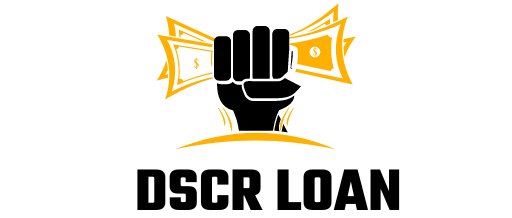Key Takeaways
- A balloon loan has smaller regular payments and a large one-time balloon payment due at the end plan how you’ll handle that lump sum.
- Balloon loans are common for short-term needs (commercial real estate, business equipment) but carry refinancing and interest-rate risks.
- Lenders look closely at your repayment plan (sale, refinance, or savings) and the collateral value to approve balloon financing.
- You can reduce risk by negotiating terms, securing a refinance option ahead of time, or choosing a hybrid (construction-to-perm or balloon-to-full) product.
Introduction
A balloon loan is a loan where monthly payments are usually lower because they don’t fully amortize the principal. Instead, you pay a large lump sum (the balloon) at the end of the term. If you’re evaluating financing for property, equipment, or a short-term business need, understanding balloon loans helps you weigh lower monthly costs against the final payment risk. This guide explains how balloon loans work, when they make sense, and practical ways to manage the end-of-term payment.
What Is a Balloon Loan?
A balloon loan schedules relatively low monthly payments that cover interest and some principal, then requires a large final payment often much larger than the monthly installment at maturity. Typical balloon mortgage terms run 5–10 years, after which the balloon payment is due. Because the loan doesn’t fully amortize, the final payment can be a sizable portion of the original loan.
Quick facts
- Shorter terms than typical fully amortizing loans (often 5–10 years).
- Lower monthly payments during the term.
- Large final lump-sum payment due at maturity.
- Common in commercial real estate and certain business loans.
Why Borrowers Choose Balloon Loans
Borrowers pick balloon loans for several valid reasons:
- Lower monthly cash flow burden is good for businesses needing cash for operations or growth.
- Flexibility ideal when you expect to sell, refinance, or receive funds before the balloon is due.
- Short-term financing suits projects with a clear exit strategy (e.g., rehab + sale).
- Potentially lower rate/qualifying threshold compared with some alternative short-term loans.
But these benefits come with trade-offs: you must have a reliable exit plan to pay or refinance the balloon, otherwise you risk default or losing the collateral.
How Balloon Loans Work Step by Step
- Application & underwriting lender evaluates credit, collateral value, and your planned exit (sale, refinance, or savings).
- Loan term & payments you make monthly payments (usually interest-only or partially amortizing).
- Inspection & covenants some loans require periodic inspections or covenants to protect collateral value.
- Balloon maturity at the end of the term the lump-sum balloon is due; you must pay, refinance, or sell the asset.
Real-World Example How a Balloon Loan Plays Out
Case: Alex, a small business owner, borrows $400,000 with a 7-year balloon loan to buy a storefront. Monthly payments are low, helping cash flow during renovation and tenant search. Alex plans to refinance to a 20-year commercial mortgage after securing a long-term tenant.
- Pros: Lower payments while property is improved and stabilized.
- Risk: If market rates spike or the property value drops, refinancing may become costly or unavailable leaving Alex to either find a buyer or pay the balloon from other funds.
This example shows why lenders will ask for a credible refinance or sales plan during approval.
Pros and Cons
Pros
- Lower monthly payments ease short-term cash flow.
- Useful for projects with a clear, short-term exit strategy.
- Can be cheaper for borrowers who intend to sell or refinance before maturity.
Cons
Large balloon payment risk at maturity.
- Dependence on future refinancing conditions rates and collateral values may change.
- If you can’t pay or refinance, you could face foreclosure or loss of the asset.
Who Should Consider a Balloon Loan?
Balloon loans suit borrowers who:
- Have a short-term plan (sell or refinance within the loan term).
- Expect increased cash flow or capital inflow before maturity.
- Are comfortable with some risk and have contingency funds.
- Are financing commercial real estate or business equipment where short-term lower payments help launch or stabilize operations.
If you don’t have a clear exit strategy or you prefer predictability, a fully amortizing loan may be safer.
How Lenders Evaluate Balloon Loan Applications
Lenders pay close attention to:
- Exit strategy credibility documented refinance terms or sale projections.
- Collateral value and liquidity higher-value collateral reduces lender risk.
- Borrower credit and cash flow strong financials increase approval chances.
- Market conditions lenders consider local market trends that affect resale or refinance options.
Ways to Manage Balloon Payment Risk
- Plan early for refinancing: Start conversations with lenders at least 12 months before maturity.
- Negotiate a conversion clause: Some loans offer a balloon-to-term conversion if certain conditions are met.
- Build a contingency fund: Save a cushion (10–20% of the loan) to handle cost overruns or market shifts.
- Arrange a take-out lender: Secure a conditional commitment from a lender willing to refinance at maturity.
- Consider hybrid products: Construction-to-permanent loans or buy-to-let mortgages often avoid a single large balloon.
Legal & Consumer Protections
Because balloon payments can be risky, regulations and consumer protections apply in many markets:
- Balloon mortgages may not fit the Qualified Mortgage rules in some jurisdictions, limiting availability for certain consumers. If a balloon loan is not right for your situation, federal guidelines and consumer agencies (like the Consumer Financial Protection Bureau) provide educational resources and warnings.
Conclusion
A balloon loan can be a smart short-term financing tool when paired with a realistic exit strategy such as selling the asset, refinancing into a long-term loan, or having cash reserves to pay the lump sum. They lower monthly payments and can free up working capital during critical growth or renovation phases. However, the big risk is the large final payment; without a plan, borrowers may face refinancing challenges or foreclosure. Before you sign:
- Confirm your exit plan and test refinance scenarios with lenders.
- Ask whether the loan offers conversion options or a conditional refinance commitment.
- Build a contingency reserve and keep documentation up to date.
FAQs
What is the difference between a balloon loan and an interest-only loan?
A balloon loan may feature interest-only payments but always requires a final lump-sum balloon; interest-only loans can be structured to amortize later without a single large payment.
Can I refinance a balloon loan before the balloon is due?
Yes, refinancing is a common plan. But approval depends on market rates, your credit, and the property value at refinance time. Documented refinance intent strengthens your application.
Are balloon loans illegal or unsafe?
Not illegal, but they carry higher risk than fully amortizing loans. The CFPB recommends understanding your repayment plan and considering whether a balloon loan suits your financial situation.
Can a balloon loan be used for small business financing?
Yes. Many business loans and commercial mortgages use balloon structures to support growth phases, renovations, or lease-up periods. Ensure your business plan includes a reliable exit.

Introducing Emily Parker, a seasoned professional with over 5 years of expertise in DSCR loans. With her extensive knowledge and experience in the field, Varsha has consistently demonstrated a deep understanding of DSCR loan intricacies and a proven track record of delivering successful outcomes for her clients.

